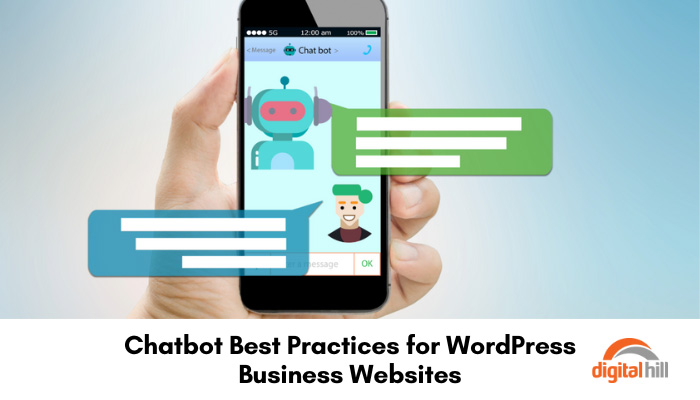Chatbot Best Practices for WordPress Business Websites

Chatbots have become an indispensable tool for businesses, especially those utilizing WordPress websites. These AI-driven assistants can handle inquiries 24/7, ensuring that your business remains responsive to customer needs at all times. However, to fully leverage the benefits of chatbots, it’s crucial to follow certain chatbot best practices. This article outlines key strategies to optimize chatbot functionality on WordPress business websites. In turn, this allows you to enhance customer satisfaction and streamline operations.
Select the Right Chatbot Plugin
The first step is selecting a suitable chatbot plugin. After all, this will be the foundation of effective chatbot functionality on your WordPress website. Consider these factors when researching:
- Compatibility: Ensure the chatbot plugin is fully compatible with your WordPress theme and other plugins your business utilizes.
- Features: Look for plugins offering customizable chatbot responses, AI learning capabilities, and integration with major CRM platforms.
- User Reviews: Read reviews and ratings from other users to gauge the plugin’s performance and support quality.
Customize Chatbot Interactions
Personalizing chatbot interactions significantly improves user experience. Follow these guidelines when customizing your chatbot:
- Brand Voice: Tailor your chatbot’s responses to reflect your brand’s voice and personality. Not only does this ensure accurate brand representation, but it makes interactions more engaging for customers.
- User-Friendly Language: Use clear and straightforward language so all users can understand the chatbot.
- Quick Replies: Implement quick reply options for common questions. This can help to streamline the conversation flow and improve customer service.
Ensure Seamless Integration with Customer Support
Chatbots can handle many customer inquiries. However, they should also seamlessly integrate with human support for more complex issues. Strategies include:
- Escalation Pathways: Establish clear pathways for escalating conversations from the chatbot to human agents when necessary.
- Availability Indicators: Make sure to clearly indicate when live support is available and provide options for users to leave messages during off-hours. Ensure your team checks for the messages each morning.
Monitor and Improve
Continuous monitoring and improvement are vital to maintaining an effective chatbot. Consider these practices:
- Analytics: Utilize chatbot analytics to track engagement, satisfaction rates, and common inquiries.
- Feedback Mechanism: Implement a feedback option for users to rate their chatbot experience. These insights help with further refinement.
- Regular Updates: Update your chatbot’s knowledge base and responses with new products, services, and FAQs.
Focus on Privacy and Security
In an era where data privacy is paramount, ensuring your chatbot adheres to privacy and security standards is essential. Key measures include:
- Data Handling: Clearly communicate how the chatbot collects, uses and stores user data.
- Compliance: Ensure your chatbot complies with relevant data protection regulations, such as GDPR for European customers.
- Secure Conversations: Implement encryption and other security measures to protect the privacy of conversations.
Educate Users on Chatbot Capabilities
Informing users about what your chatbot can and cannot do enhances the user experience. This involves:
- Initial Greeting: Design your chatbot’s initial greeting to outline the scope of inquiries it can handle. This will eliminate frustration and save your customers time.
- Guidance: Provide users with tips on interacting with the chatbot effectively, such as suggesting keywords or phrases.
Testing and Feedback
Before launching, thoroughly test your chatbot to identify and fix any issues. This includes:
- User Testing: Invite a small group of users to test the chatbot and provide feedback on its functionality and user experience.
- Scenario Testing: Create various interaction scenarios to ensure the chatbot responds appropriately in different situations.
Harnessing Chatbot Technology for Enhanced Customer Engagement
Incorporating chatbots into WordPress business websites is a powerful way to boost customer engagement, provide round-the-clock support, and improve operational efficiency. By following the best practices above, businesses can ensure their chatbots provide meaningful interactions, safeguard user data, and continuously evolve to meet customer needs. Remember, a well-implemented chatbot is not just a tool for automated responses but a dynamic part of your customer service strategy that can significantly enhance the overall user experience.